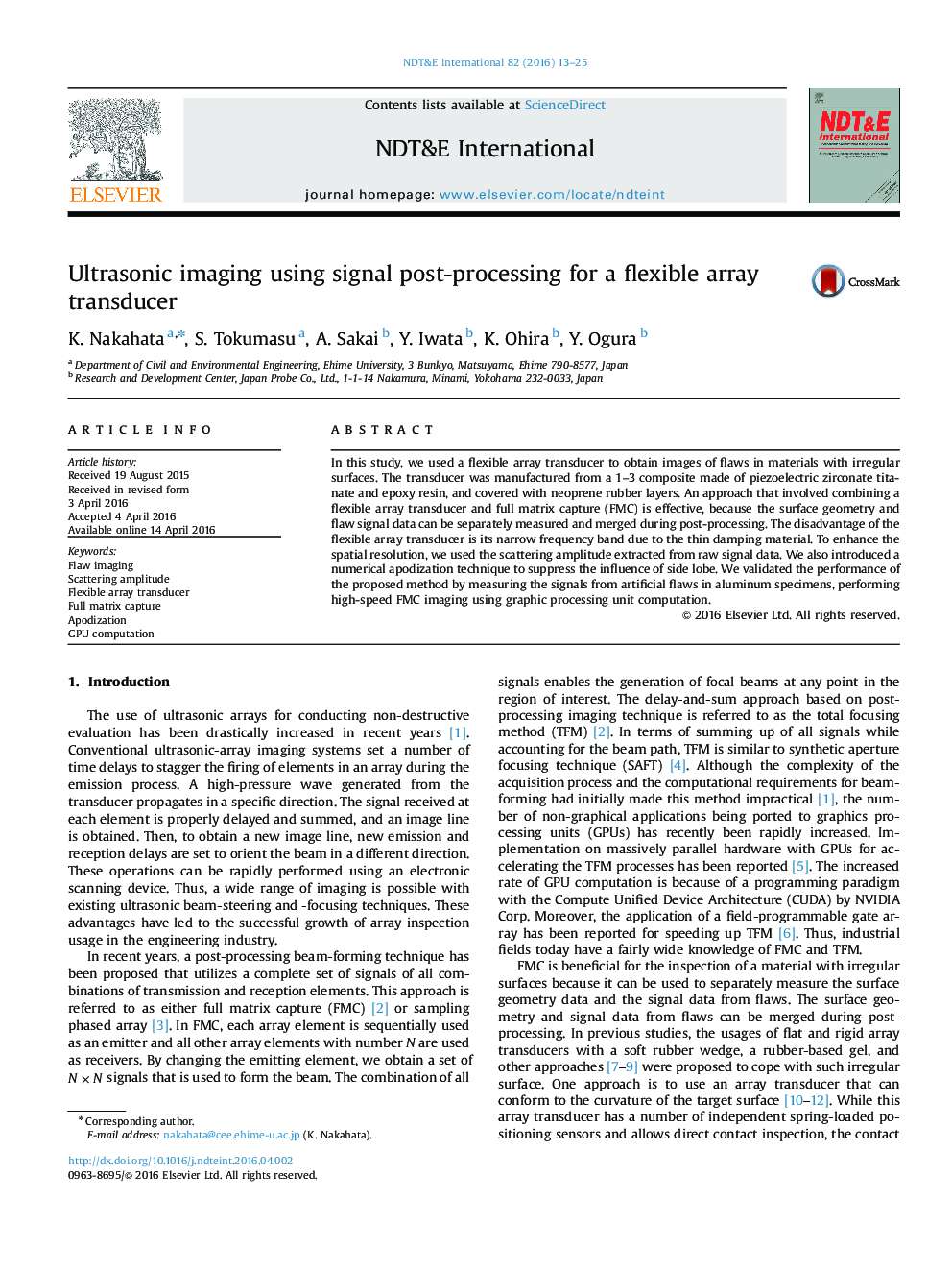| Article ID | Journal | Published Year | Pages | File Type |
|---|---|---|---|---|
| 294930 | NDT & E International | 2016 | 13 Pages |
In this study, we used a flexible array transducer to obtain images of flaws in materials with irregular surfaces. The transducer was manufactured from a 1–3 composite made of piezoelectric zirconate titanate and epoxy resin, and covered with neoprene rubber layers. An approach that involved combining a flexible array transducer and full matrix capture (FMC) is effective, because the surface geometry and flaw signal data can be separately measured and merged during post-processing. The disadvantage of the flexible array transducer is its narrow frequency band due to the thin damping material. To enhance the spatial resolution, we used the scattering amplitude extracted from raw signal data. We also introduced a numerical apodization technique to suppress the influence of side lobe. We validated the performance of the proposed method by measuring the signals from artificial flaws in aluminum specimens, performing high-speed FMC imaging using graphic processing unit computation.
